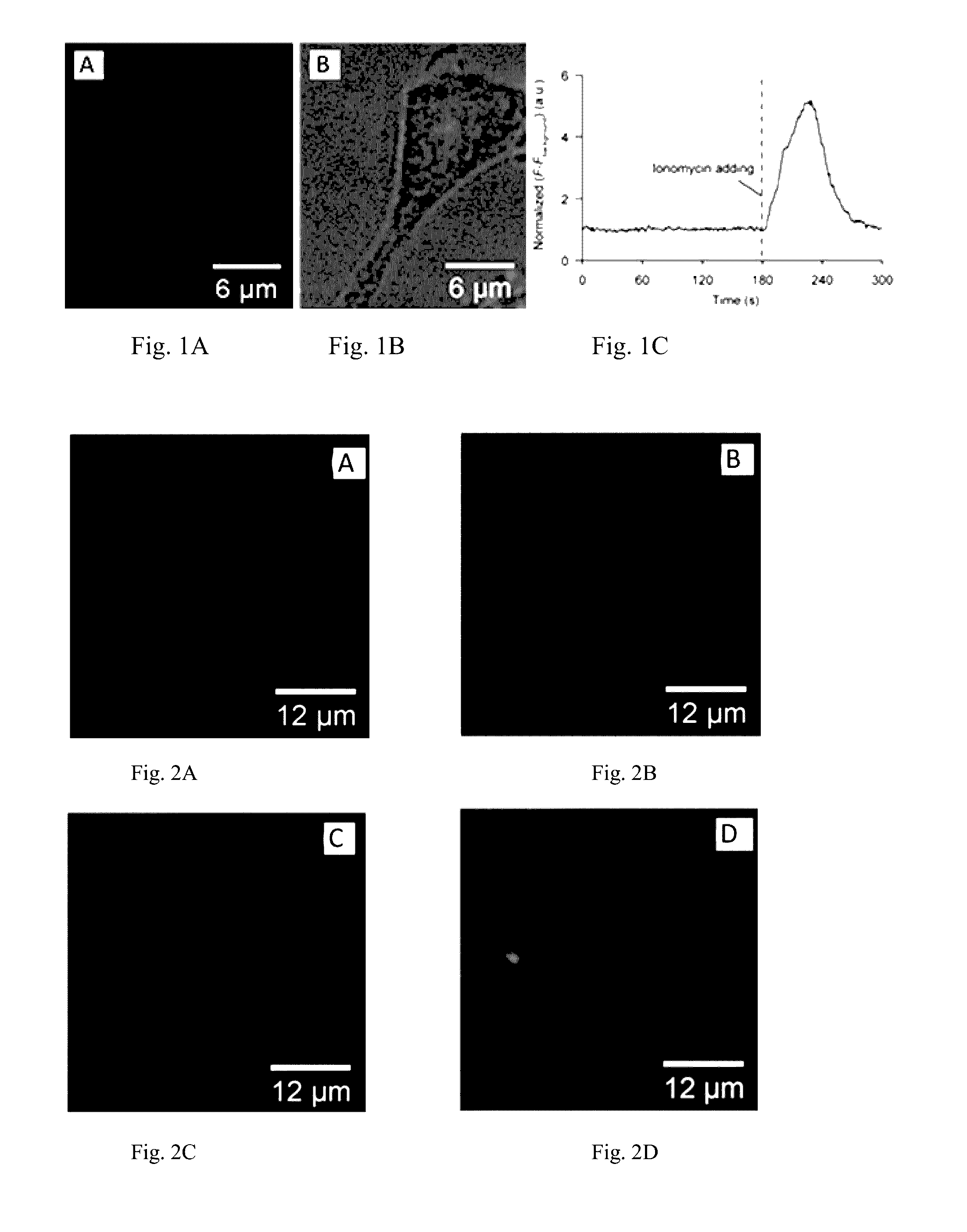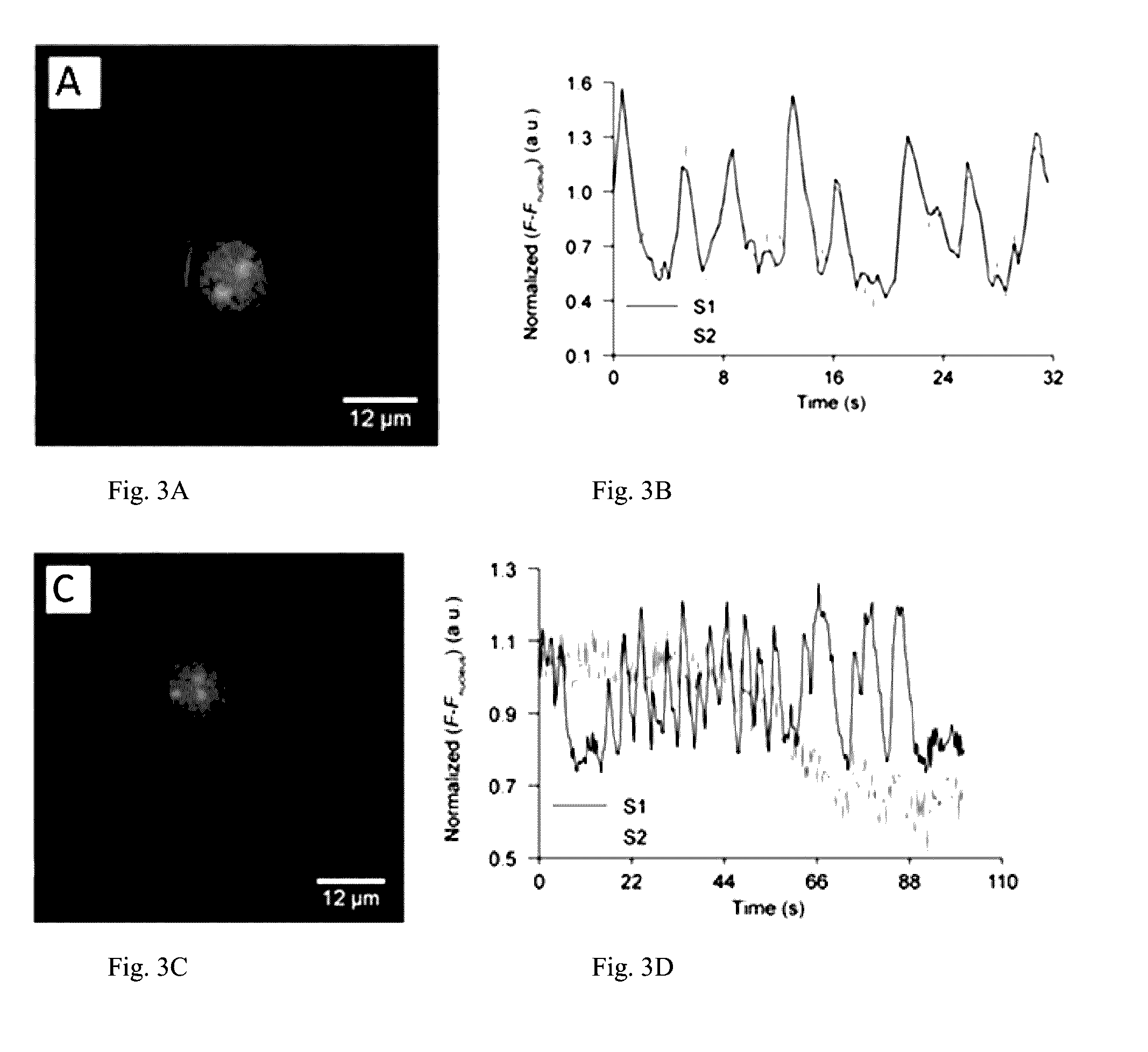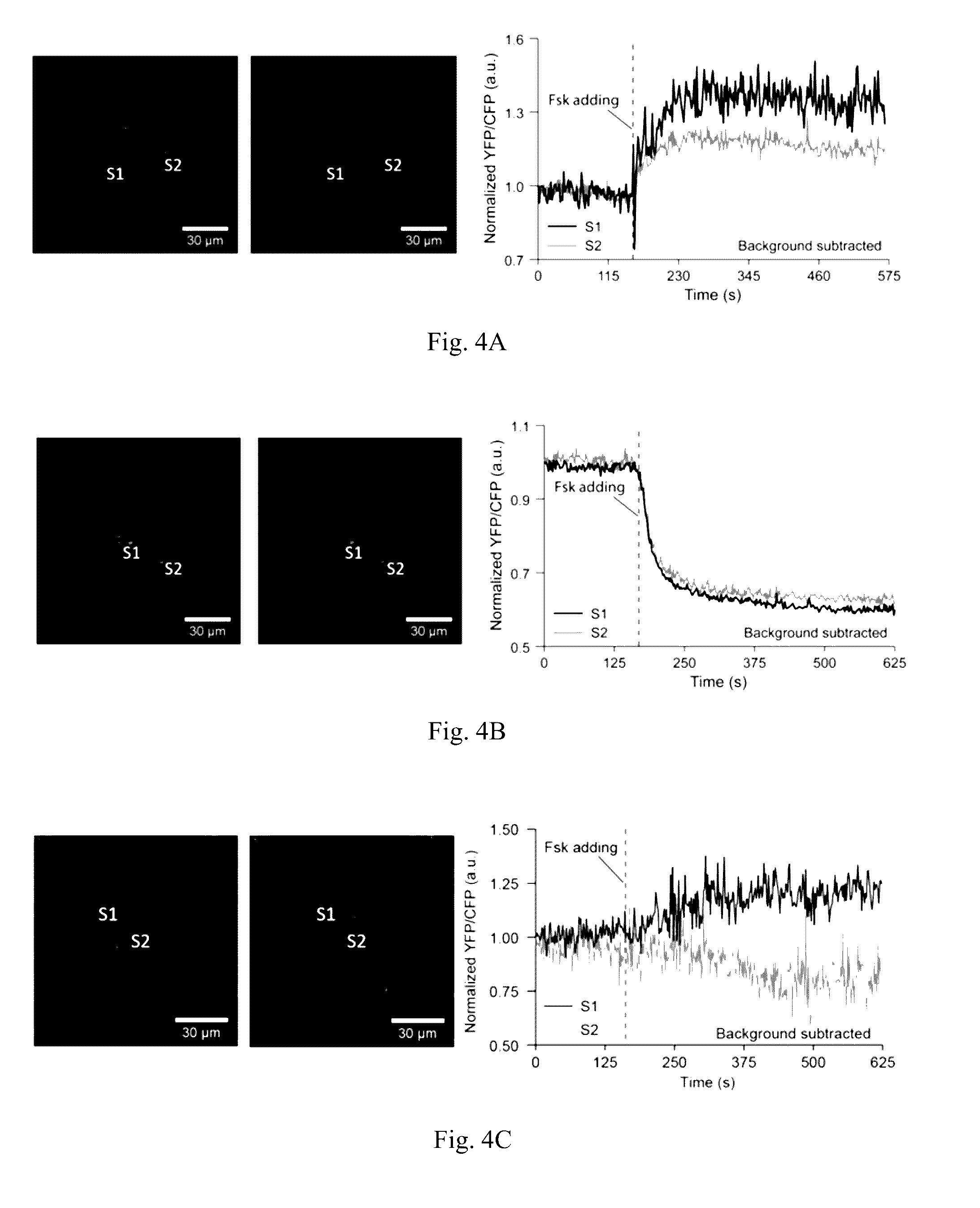Spatial multiplexing for multisignal cellular imaging
a multi-signal, imaging technology, applied in the field of high-content, single-cell resolution, spatial multiplex cell imaging system, can solve the problems of compromising the successful use of imaging methods in living cells, not being able to monitor more than one or two signals in a living cell,
- Summary
- Abstract
- Description
- Claims
- Application Information
AI Technical Summary
Benefits of technology
Problems solved by technology
Method used
Image
Examples
example 1
Methods:
Bioinformatics Design in DNA Binding Sites:
[0064]TALE binding sites were searched in hg20 (human) and mm 10 (mouse) genome database, respectively. Each binding site contained more than 20 repetitive binding sequences, with each sequence was 20 bp in length and started with a thymine. The selected binding sites were assured to be chromosome specific, and at least 5000 by away from the active genes. The selected binding sites allow at least 20 copies of TALE-fused sensors clustering with sufficient brightness for imaging. The selected sites, because they do not overlap with active genes, minimize the chance of expressed TALE proteins regulating the gene expression.
Construct Cloning:
[0065]The genes encoded the GCaMP6f, GEICS1.3, AKAR4, and ICUE3 proteins fused to nuclear localization signal (NLS) and corresponding antibody tag were subcloned into the modified pCI vector backbone (Promega) using NheI and EcoRI sites. The pCI vector was modified by removing BsaI site from bla gen...
PUM
| Property | Measurement | Unit |
|---|---|---|
| Pharmaceutically acceptable | aaaaa | aaaaa |
| Fluorescence | aaaaa | aaaaa |
Abstract
Description
Claims
Application Information
 Login to View More
Login to View More - R&D
- Intellectual Property
- Life Sciences
- Materials
- Tech Scout
- Unparalleled Data Quality
- Higher Quality Content
- 60% Fewer Hallucinations
Browse by: Latest US Patents, China's latest patents, Technical Efficacy Thesaurus, Application Domain, Technology Topic, Popular Technical Reports.
© 2025 PatSnap. All rights reserved.Legal|Privacy policy|Modern Slavery Act Transparency Statement|Sitemap|About US| Contact US: help@patsnap.com



